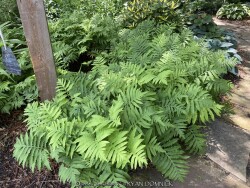

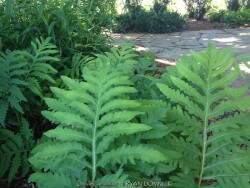
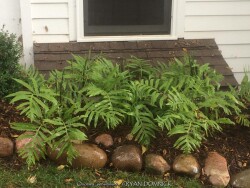
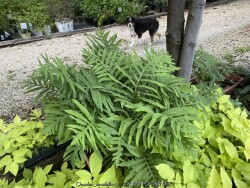
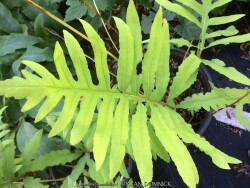
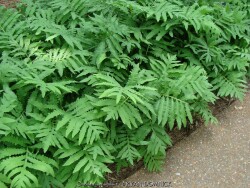
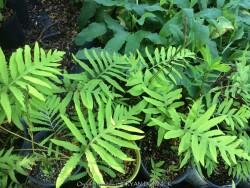
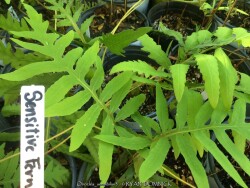
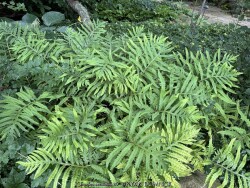

Plant Min Zone: 2a
Plant Max Zone: 7b
Sunlight: Part Sun, Shade
Water / Rainfall: Average, High, Very High
Soil Quality: Rich
Bloom Season: None
Flower Color: None
Berry / Fruit Color: None
Spring Foliage Color: Green
Summer Foliage Color: Green
Fall Foliage Color: Green
Evergreen Foliage: No
Winter Interest: No
Scented Flowers: No
Drought Tolerance: Low
Wet-Feet Tolerance: High
Humidity Tolerance: Low, Medium
Wind Tolerance: Low
Poor Soil Tolerance: No Extreme Soils
Height: 2' - 3'
Width: 2' - 3'
Growth Rate: Slow, Medium
Service Life: Long: 5-10 years
Maintenance Need: Medium
Spreading Potential: Low
Yearly Trimming Tips: Trim Perennial to Ground Around First Fall Freeze: No Winter Interest.
Plant Grouping Size: Small Grouping of 3-5
Best Side of House: East Exposure, North Exposure
Extreme Planting Locations: Tolerates Damp Full Shade, Resistant to Rabbits
Ornamental Features: Large Tropical Foliage / Flowers, Exceptional / Colorful Foliage
Special Landscape Uses: Groundcover
Possible Pest Problems: None
Plant Limitations: Needs Regular Irrigation
Shippable in 2026: YES
Sensitive Fern (Onoclea sensibilis) is a coarse-textured, medium to light green, deciduous perennial fern. Native to Asia and North America, it forms large colonies in forests growing best in moist shaded or partially shaded areas. It also colonizes wet meadows, thickets and bogs, as well as stream and riverbanks and roadside ditches. It tolerates extremely wet soils, can be aggressive in ideal locations but not so much in Kansas. It can spread rapidly in humusy, medium well-drained soil in part shade to full shade. Perfect in wet shade areas, north walls, areas without tree-root competition, or shaded rain gardens. It cannot handle prolonged Kansas droughts or dry-shade, but can tolerate dryer conditions in shade with good soils. Generally however, in non-irrigated or poor soil areas, this plant will decline and allow weeds to invade. Foliage finally dies back to the ground in early autumn with "fiddle-heads" emerging and unfurling in mid-spring. Generally this plant holds its own in Kansas climates but fails to spread very quickly. Look for a cold microclimate planting location such as East or North exposure. I have seen an established planting thriving on the north side of a customer's house for 20 plus years in zone 6a, Lawrence, KS.